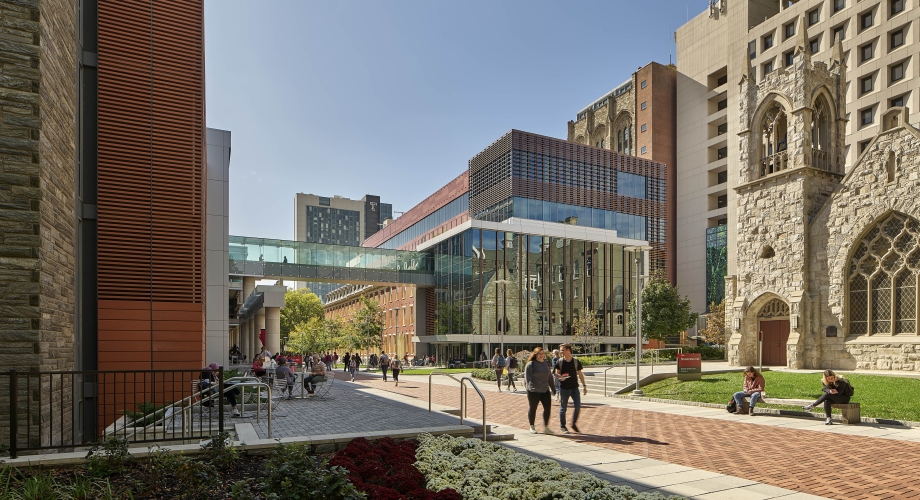Higher education facilities managers and their teams are being challenged to adopt sustainability initiatives on expedited timelines to meet university leadership Net Zero commitments to staff, students and alumni. Sustainability initiatives are being seen today as a necessity to be competitive across academic institutions to attract the best candidates, which is paramount to the health and success of these organizations.
Additionally, many college and university presidents and chancellors have also signed on to the American College & University Presidents’ Climate Commitment which publicly commits the institutions to developing and implementing sustainability plans. These pledges have created self-imposed deadlines for the Universities.
This combination of factors has put extreme pressure on facilities managers to implement maintenance procedures and system upgrades. The modifications are all required at a time where the end goals, and process on how to obtain those goals, are very fluid.
A Shift in Facilities Goals from Energy Efficiency to Sustainability
Until recently, campus building updates focused mostly on incremental energy efficiency measures, especially for existing buildings. Recent upgrades to legacy systems like HVAC, have produced more efficient systems, but are still fossil-fuel based. While Net Zero requirements do focus on energy reduction, they also require building electrification and the use of renewable energy (or power). This is another layer of complication, and cost, that can be daunting to the most sophisticated of facilities departments.
It is difficult to transition a whole campus, especially when many universities have recently upgraded their fossil-fuel cogeneration plants. Some may even be mid-stream in this process, and now have to shift to incorporate building electrification strategies instead. This may require upgraded electrical services to the campus, as well as development of decentralized systems – clusters of smaller plants around certain buildings – which require more back of house space, and even outdoor and rooftop space. The modifications to serve an all-electric building require infrastructure-level changes in many cases, which was not previously the norm.
Navigating to a Successful Sustainability Program
In an ideal world, development of a master sustainability plan which lays out the framework for implementation and prioritization of buildings across the campus should be a priority. That includes putting hard metrics together for measuring the success of the plan, such as carbon emissions, biodiversity, and water conservation goals. Decisions on these factors will inform the plan’s development and implementation.
Incorporating sustainability into new buildings is less difficult than retrofitting one, but according to McKinsey & Company’s study, Call for Action: Seizing the Decarbonization Opportunity in Construction, 80% of the buildings that are currently in use will still be occupied in 2050 – well after the 2030 sustainability goal dates that many universities are setting. That means facilities managers will need to work in tandem with university leadership, architects and engineers as the master plan is developed to ensure building prioritization makes sense according to the physical maintenance and upgrade of systems in each one. Without the boots-on-the-ground input from the facilities teams, decisions may be made that can’t be properly implemented within the existing campuses and buildings.
Once the plan is approved for implementation, streamlining processes and drawing efficiencies through modeling will help smooth the way for the mechanical upgrades that take place. Starting with a better understanding of existing control systems can help determine actual building loads for right sizing for future needs. This can be done by using building automation systems, analyzing trend data and creating design-case energy consumption models.
Another important energy component is the utilization of commissioning teams. Commissioning agents can ensure that the new building systems are operating correctly and set to their optimum set points, as well as identify additional energy efficiency opportunities that are low or no cost. Commissioning services are important to both new and existing buildings. Ongoing energy audits and retro commissioning studies will ensure that the buildings are operating at their highest efficiencies while also providing comfortable environments for working, studying or enjoying college life.
2030 is Just Around the Corner
Universities are accelerating their schedules for having fully sustainable campuses. The most aggressive are pushing it up to 2030. That’s only six years for facilities management to learn and embrace new technologies of existing buildings. Even new construction will have challenges, since many Higher Education buildings can take up to four years to design and construct. Which requires the infrastructure to support them to also be expedited. Facilities teams are truly on the forefront of widespread initiatives to combat climate change in the United States. Working with a multidisciplinary set of engineers and consultants who know how to develop AND implement a sustainability plan can be the key to surmounting the challenges that are being set for facilities now, and in the future.

